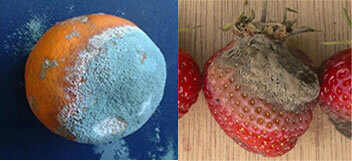The official mascot for the 2018 World Cup, which takes place in Russia, is a graceful wolf named Zabivaka. The mascot was chosen through popular vote and created by Design student Ekaterina Bocharova. The name, Zabivaka,means “he who scores a goal”.
The role of a World Cup mascot is to ensure the animation of the event and promote this important championship. FIFA highlights as attributes of this mascot his love for football, his charm and confidence, in addition to being a lot of fun.
→ Zabivaka represents a wolf
As we saw at the beginning of this text, Zabivaka is a wolf with human characteristics (anthropomorphic wolf), kind and fun.But what are real wolves like?
Wolves are well known animals in Russia. The gray wolf, scientific name kennels lupus, found in this region is an important species and, in the past, has already been considered the kind of mammal most widely distributed in the world. Unfortunately, many factors affect these animals. Currently this species of wolf is extinct in much of Western Europe, Mexico and part of the United States.
Gray wolves are not as friendly as Zabivaka. Even so, they don't usually attack humans, these situations being relatively rare. He is a carnivore and feeds mainly on animals such as moose, deer, wild boar and caribou. Gray wolves can also feed on cattle, carrion and even garbage, thus possessing an extremely varied diet.

Wolves rarely attack humans
Wolves live in groups (the packs) made up of a breeding pair, their offspring, and a few non-breeding adults. All members of the pack help with the care of the young, bringing, for example, food when the little ones are not yet able to hunt. In the first month of life, the calf feeds on the mother's milk and, around the eighth month, it starts to go out with the adults. Gray wolves can live to be 13 years old, reaching sexual maturity at around three years of age.
Wolves have an interesting form of communication: the howl. See some howl functions:
It could be a sign that some danger is approaching;
Warn that the territory has an owner;
Locate any member of the pack;
Start or end a hunt;
Strengthen group connections.

wolves live in a group
Read too: Guara wolf
→ The action of man and the gray wolves
Man has played an important role in reducing the number of various species across the planet. This is no different with wolves. Man greatly reduces the population of these animals when hunting the species and destroying its habitat. Prey reduction is also a key factor in wolves reduction.
In this World Cup, don't see Zabivaka as just another mascot. Think of it as a representation of an animal that, like others, suffers from human action. Preserving is necessary!



